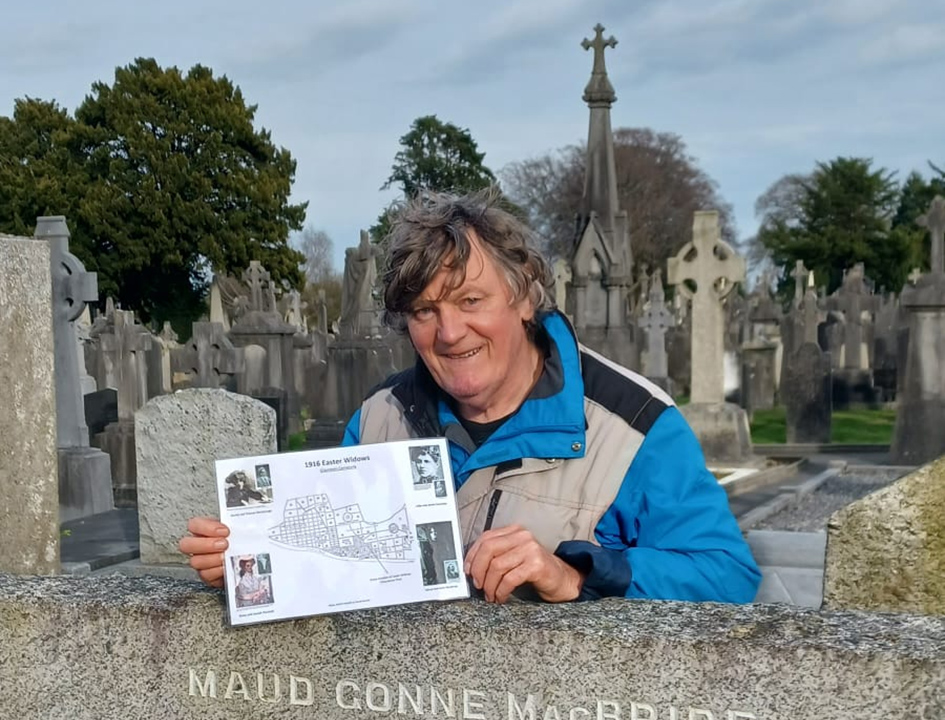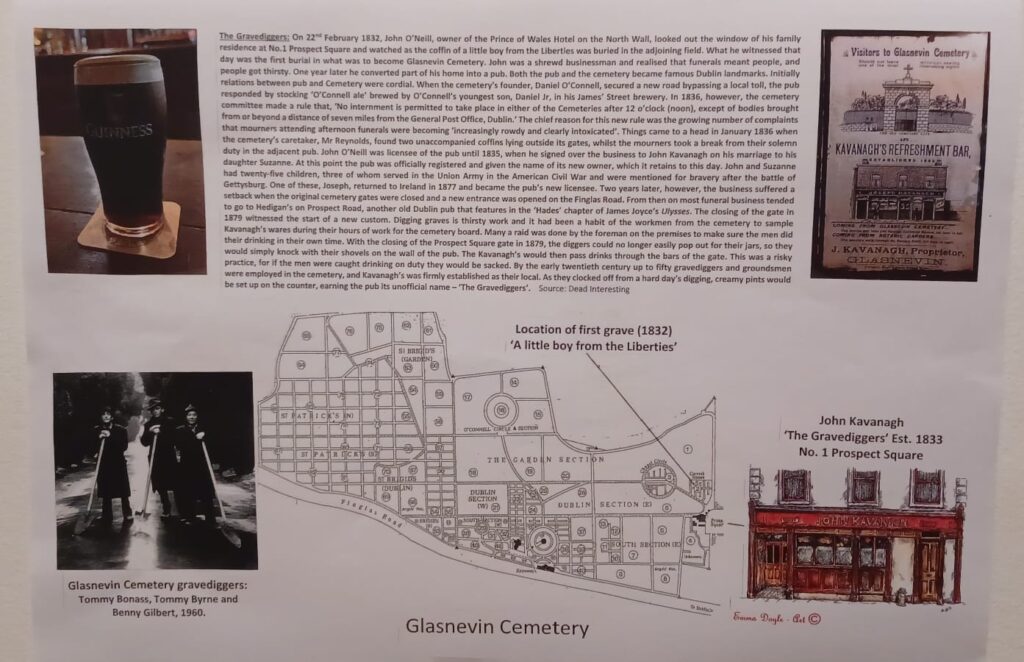I met Martin Mooney in the early spring of 2021 during one of my routine COVID sanity walks through Dublin’s Glasnevin Cemetery. The Victorian-era cemetery first opened in 1832 and is the final resting place of over 1.5 million Dubliners (and counting). From the vaulted tombs of politicians and judges to the tens of thousands of unmarked graves that are scattered through its 124 acres, many walks of life have ended at Glasnevin. Mr. Mooney has made it his life’s work to bring them back from the beyond, mostly in the form of diligently researched cemetery map printouts, which he types, cuts, pastes, copies, and carefully laminates, thereby weatherproofing them so that they are ready to be distributed to anybody, rain or shine, who succumbs to his charm.

Martin Mooney: Mapmaker and Taphophile
Martin’s Maps, though well-researched and durable, are sometimes a bit difficult to read. The intrigue of his tales can sometimes get lost in unbroken walls of text, and his re-sized, photocopied historical imagery can often be scattered, grainy, and similarly difficult to discern. To be clear, I love and cherish Martin’s Maps, and I hope he never stops making them. If you spend 5 minutes with the man, it is clear that he is a masterful storyteller. Unfortunately, when converted to the chaos of the page, the stories lose their luster. With a few fixes and a more carefully designed layout, I knew that Martin’s Maps could become nearly as captivating as Martin himself. As a graphic designer, I had a job to do.
 Martin Mooney’s map, including the history of Gravediggers Pub
Martin Mooney’s map, including the history of Gravediggers Pub
The importance of good layout design cannot be overstated. When text and image harmoniously adhere to margins, grids, and guides, and when legible fonts are sized into aesthetically pleasing and restrained hierarchies, stories come to life! There are few things I want more than for Martin’s stories to live forever.
A cartographer’s conundrum:
re-designing the map
I questioned how I could re-design Martin’s Maps so that they are not only more digestible, but also easy to reproduce and distribute en masse? Enter: the one-page foldable zine.
Zines emerged in the early 20th century and thanks to the invention of the copy machine, have been bastions of cheap, accessible self-publishing ever since. This one-page zine is my take on Martin’s Map about The Gravediggers pub, located adjacent to the cemetery’s old entrance.

The printed zine, held aloft during a walk through my new local (Portland’s Lone Fir Cemetery)

An unfolded zine reveals a large-scale map of Glasnevin Cemetery.
My zine folds into six internal pages, which serve to break up text and relevant imagery. Readers can physically engage with the material as they flip through the booklet and can also unfold the zine to enjoy a large-scale 11×17 cemetery map featuring points of interest, printed on the back. When folded, the zine is slightly larger than a passport, and can easily fit in pockets or bags, making it a wonderfully portable walking companion for a tour of the cemetery.
Great graphic design is so much more than thoughtful, aesthetically pleasing layouts. It is about using compelling visual tools to captivate an audience and communicate impactful messages. At Coates Kokes, we understand that good layout design is one of the most powerful storytelling devices in the world. Every day, we aim to be champion storytellers for our clients.
I hope that this first volume Martin Mooney’s Tales from Beyond the Grave is the first of many zines to come, and I can’t wait to send a few copies to the man himself. In the meantime, have a very Happy Halloween from me, Martin, and the CK team.
—
You can download and print your very own version of this zine here. A small amount of cutting is required, so you will need scissors! Instructions on how to cut and fold the zine can be found here.